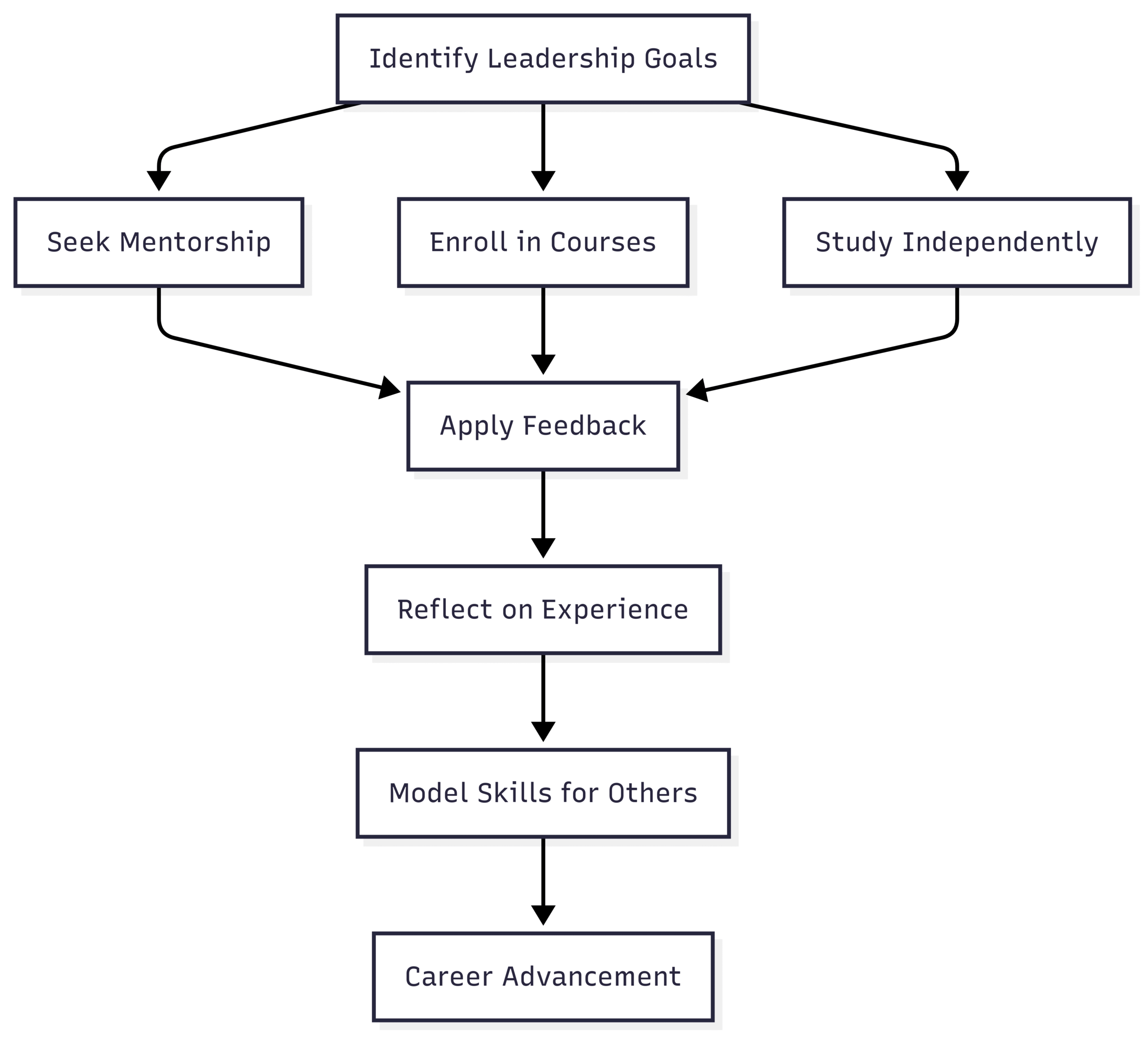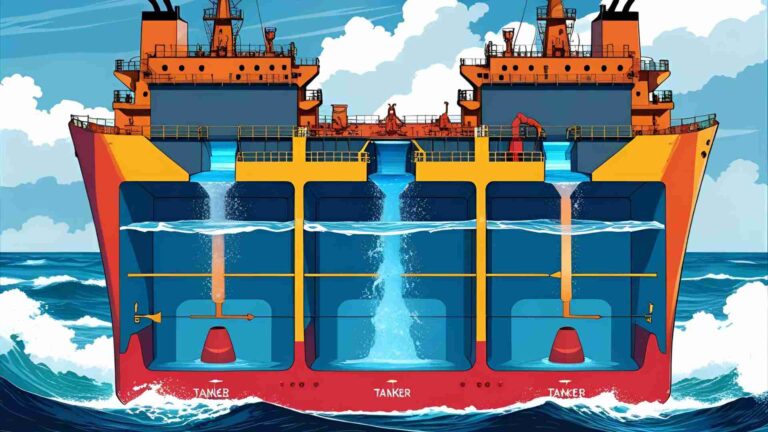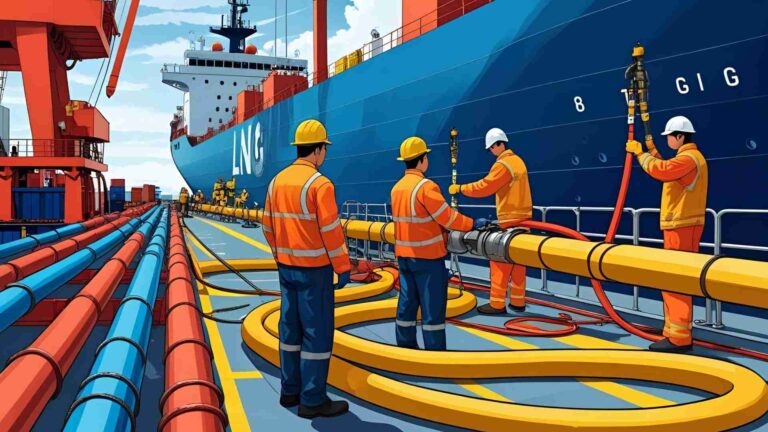Essential Skills for a Career in Maritime Leadership
Explore essential maritime leadership skills like communication, decision-making, and adaptability for a thriving career at sea.
The maritime industry is a cornerstone of global trade, defense, and transport, demanding exceptional leadership to navigate its unique challenges. From commanding vessels in turbulent seas to managing diverse crews in high-stakes environments, maritime leaders must master a blend of technical expertise and soft skills. This article delves into the essential skills required for a successful career in maritime leadership, drawing from industry insights, expert perspectives, and real-world applications. Whether you’re a cadet stepping aboard your first ship or an officer aiming for the master’s chair, these skills will steer you toward success.
The Unique Demands of Maritime Leadership
Unlike traditional office settings, the maritime workplace is a dynamic, high-pressure environment where leaders face rugged conditions, multicultural crews, and life-or-death decisions. Leadership at sea isn’t about superficial gestures like bringing doughnuts to a meeting; it’s a lifestyle that requires resilience, accountability, and the ability to inspire under pressure. The hierarchical structure of maritime operations—clearly defined ranks from deckhands to captains—amplifies the need for leadership at every level. As the industry evolves with smart shipping, automation, and sustainability goals, the demand for skilled leaders is surging.
The World Economic Forum’s Future of Jobs report highlights that 60% of workers will need specialized training by 2027 to address technological advancements. In the maritime sector, which often lags in adopting new trends, this need is even more pronounced. Leaders must not only manage traditional operations but also embrace digital tools, regulatory changes, and crew welfare. Below, we outline the core skills that define maritime leadership, supported by practical examples and actionable strategies.
Core Leadership Skills for Maritime Professionals
Maritime leadership hinges on a combination of soft and technical skills. Here are the critical competencies every leader must cultivate:
1. Communication
Effective communication is the backbone of maritime operations. Clear, assertive, and respectful dialogue ensures safety, coordination, and teamwork. Leaders must use Standard Marine Communication Phrases (SMCP) and provide constructive feedback. Poor communication can lead to misunderstandings with catastrophic consequences, such as navigational errors or delayed emergency responses.
- Example: During a storm, a captain must relay precise instructions to the bridge team while communicating calmly with coastal authorities.
- How to Develop: Practice active listening, enroll in maritime communication courses, and simulate high-pressure scenarios in training.
2. Decision-Making Under Pressure
Maritime leaders often make split-second decisions in crises, such as engine failures or collisions. Rapid risk assessment, confidence, and the ability to weigh options without arrogance are crucial. The ability to act decisively while maintaining composure sets great leaders apart.
- Example: In an engine room fire, the chief engineer isolates fuel systems while the master directs the bridge team, showcasing coordinated decision-making.
- How to Develop: Participate in Bridge Resource Management (BRM) courses and emergency response drills to hone decision-making skills.
3. Team Building and Motivation
Vessels rely on cohesive teams to function. Leaders must recognize crew strengths, assign tasks effectively, and foster trust among multinational crews. Motivating a diverse team in confined, high-stress environments requires cultural sensitivity and accountability.
- Example: A second officer organizes a multicultural crew for a safety drill, ensuring everyone understands their role despite language barriers.
- How to Develop: Take Leadership and Teamworking Skills courses and seek mentorship from experienced officers.
4. Emotional Intelligence (EQ)
Emotional intelligence is vital for managing personal emotions and those of others. Leaders with high EQ resolve conflicts diplomatically, demonstrate empathy, and build strong relationships. In the close quarters of a ship, EQ fosters a positive work environment and prevents morale erosion.
- Example: A captain notices a crew member’s fatigue and adjusts their duties, preventing burnout and maintaining safety.
- How to Develop: Study EQ principles through maritime leadership programs and reflect on interpersonal interactions.
5. Adaptability
The maritime industry is dynamic, with changing regulations, technologies, and environmental conditions. Leaders must embrace new tools like digital navigation systems and adapt to unforeseen challenges, such as sudden weather shifts or crew shortages.
- Example: A leader transitions a crew to a new automated system, ensuring training and compliance without disrupting operations.
- How to Develop: Stay updated on industry trends through continuous learning and professional certifications.
Key Managerial Skills for Maritime Leaders
Beyond leadership, managerial skills ensure operational efficiency and compliance. These skills are critical for both shipboard and shore-based roles:
1. Strategic Planning and Analysis
Leaders must develop and implement plans for voyages, budgets, and resource allocation. Analyzing data, forecasting trends, and optimizing operations are essential for efficiency and safety.
- Example: A port manager uses data analytics to streamline cargo handling, reducing turnaround time.
- How to Develop: Pursue courses in maritime operations management and practice data-driven decision-making.
2. Financial Management
Managing budgets for fuel, maintenance, and crew welfare is crucial for sustainability. Leaders must forecast expenses, allocate resources, and ensure cost-effectiveness.
- Example: A budget officer in the Coast Guard oversees allocations for search and rescue missions, balancing operational needs with fiscal constraints.
- How to Develop: Study financial management principles and apply them in maritime simulations.
3. Problem-Solving
Root cause analysis, risk assessments, and preventive maintenance are vital for resolving incidents and preventing recurrence. Leaders must use checklists and protocols to address challenges systematically.
- Example: A chief engineer identifies a recurring equipment fault and implements a maintenance schedule to prevent downtime.
- How to Develop: Engage in problem-solving workshops and review incident reports for lessons learned.
4. Regulatory Compliance
Maritime leaders must ensure adherence to international standards like MARPOL, SOLAS, and the ISM Code. A deep understanding of regulations prevents penalties and ensures safety.
- Example: A safety officer conducts audits to verify compliance with environmental regulations, avoiding fines.
- How to Develop: Complete STCW-compliant courses on regulatory frameworks and stay informed about updates.
5. Emergency Response Preparedness
Leaders must be ready to handle crises, from fires to medical emergencies. Training in damage control, evacuation, and communication with authorities is non-negotiable.
- Example: During a piracy threat, a master coordinates with naval forces and prepares the crew for lockdown procedures.
- How to Develop: Participate in regular onboard drills and take Crew Resource Management (CRM) courses.
The Importance of Leadership in Maritime Operations
Leadership is not just a soft skill; it’s a mission-critical competency. A ship’s success depends on every mariner pulling their weight, guided by leaders who inspire and coordinate. The Audacious Leadership unit at Deakin University uses seafaring to teach business students leadership, highlighting its tangible impact. On a ship, leadership is on full display—failure to lead effectively can halt operations or endanger lives.
The maritime industry’s hierarchical structure underscores the need for leadership at all levels. Junior officers lead small teams, while senior officers manage entire vessels. As experienced mariners retire in the “silver tsunami,” younger professionals must step up, making leadership training more critical than ever. Strong leaders not only excel in their roles but also position themselves for promotions, climbing the ranks from cadet to captain.
Developing Maritime Leadership Skills
Becoming a maritime leader requires intentional effort. Here are five actionable strategies to develop these skills:
1. Seek Mentorship
Mentors like Captain Christine Klimkowski emphasize the value of guidance from experienced leaders. A mentor models desired skills, offers coaching, and helps navigate career challenges.
- Action: Identify a senior officer whose leadership style you admire and request informal mentorship.
2. Study Leadership Independently
Books, podcasts, and articles on leadership provide diverse perspectives. Maritime-specific resources offer context for applying these principles at sea.
- Action: Read “The Making of a Leader” by Jocko Willink or listen to maritime leadership podcasts.
3. Learn from Experience
Reflect on your successes and failures to refine your leadership approach. Observing other leaders’ strengths and weaknesses also provides valuable insights.
- Action: Keep a journal of leadership experiences and review it regularly for growth opportunities.
4. Enroll in Leadership Courses
Maritime institutions like MITAGS offer specialized courses such as Leadership and Managerial Skills and Bridge Resource Management. These programs teach practical applications in maritime contexts.
- Action: Register for a course at MITAGS or a similar STCW-compliant academy.
5. Model Leadership for Others
Mentoring junior mariners and demonstrating leadership fosters a culture of growth. By modeling skills, you inspire others to develop their potential.
- Action: Share knowledge during onboard training sessions and encourage crew members to take initiative.
Training and Certification Options
The STCW Code mandates leadership and teamwork training for officers (Sections A-II/2 and A-III/2). Recommended courses include:
| Course | Focus | Duration | Cost (Approx.) |
|---|---|---|---|
| Leadership & Managerial Skills (Operational Level) | Team coordination, communication | 5 days | $1,500–$2,000 |
| Leadership & Managerial Skills (Management Level) | Strategic planning, crisis management | 7 days | $2,000–$2,500 |
| Bridge Resource Management (BRM) | Decision-making, bridge team dynamics | 4 days | $1,200–$1,800 |
| Crew Resource Management (CRM) | Teamwork, emergency response | 3 days | $1,000–$1,500 |
| Engine Room Resource Management (ERM) | Engine team coordination | 4 days | $1,200–$1,800 |
Source: Estimated costs based on industry standards at institutions like MITAGS.
These courses equip leaders with practical skills and meet regulatory requirements, enhancing career prospects.
Future Trends in Maritime Leadership
The maritime industry is transforming, and leaders must adapt to emerging trends:
1. Digital Leadership
Smart shipping and automation require leaders to manage hybrid crews and digital systems. Cybersecurity oversight and data analytics are becoming critical.
2. Mental Health and Human Factors
Training in wellness awareness and fatigue management is gaining traction, supported by ISWAN and IMO initiatives.
3. Diversity and Inclusion
Leaders must manage multi-ethnic crews and promote gender equality, respecting diverse communication styles.
4. AI and Automation
Leaders will balance human-machine collaboration, using AI for decision support while maintaining human oversight.
Chart: Maritime Leadership Skill Development Process

This chart illustrates the iterative process of developing maritime leadership skills, from setting goals to achieving career growth.
Real-World Leadership Example
Consider a scenario where a vessel faces a fire in a busy strait:
- Chief Engineer: Leads firefighting efforts, isolating fuel systems.
- Master: Communicates with authorities, maintains bridge control, and reassures the crew.
- Second Officer: Ensures muster lists are checked and evacuation plans are ready.
This coordinated response highlights the interplay of communication, decision-making, and teamwork—core leadership skills in action.
Challenges and Opportunities
Maritime leaders face challenges like outdated training in some U.S. academies, which lag behind international programs embracing sustainability and technology. However, opportunities abound for those who invest in modern skills. Leaders who master digital tools, regulatory compliance, and crew welfare will thrive in the evolving landscape.
Conclusion
Maritime leadership is about steering people as skillfully as ships. From communication and decision-making to adaptability and emotional intelligence, these skills drive safety, efficiency, and career growth. By seeking mentorship, enrolling in courses, and embracing continuous learning, aspiring leaders can navigate the industry’s challenges and seize its opportunities. Institutions like MITAGS offer the training needed to excel, while global trends like smart shipping and diversity demand forward-thinking leadership. Invest in these skills today to chart a course for a rewarding maritime career.
Happy Boating!
Share Essential Skills for a Career in Maritime Leadership with your friends and leave a comment below with your thoughts.
Read Emergency Steering Drill Actions: Training and Real Failure until we meet in the next article.






